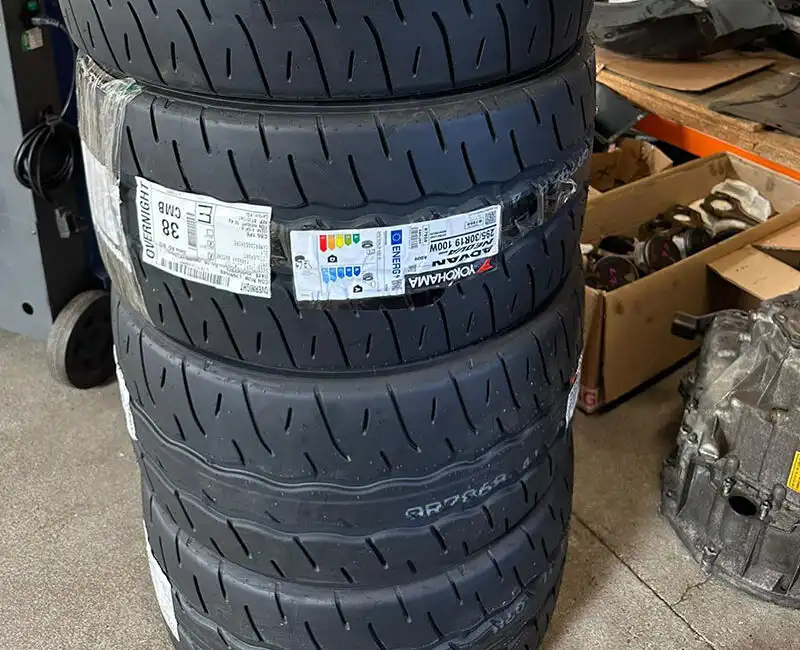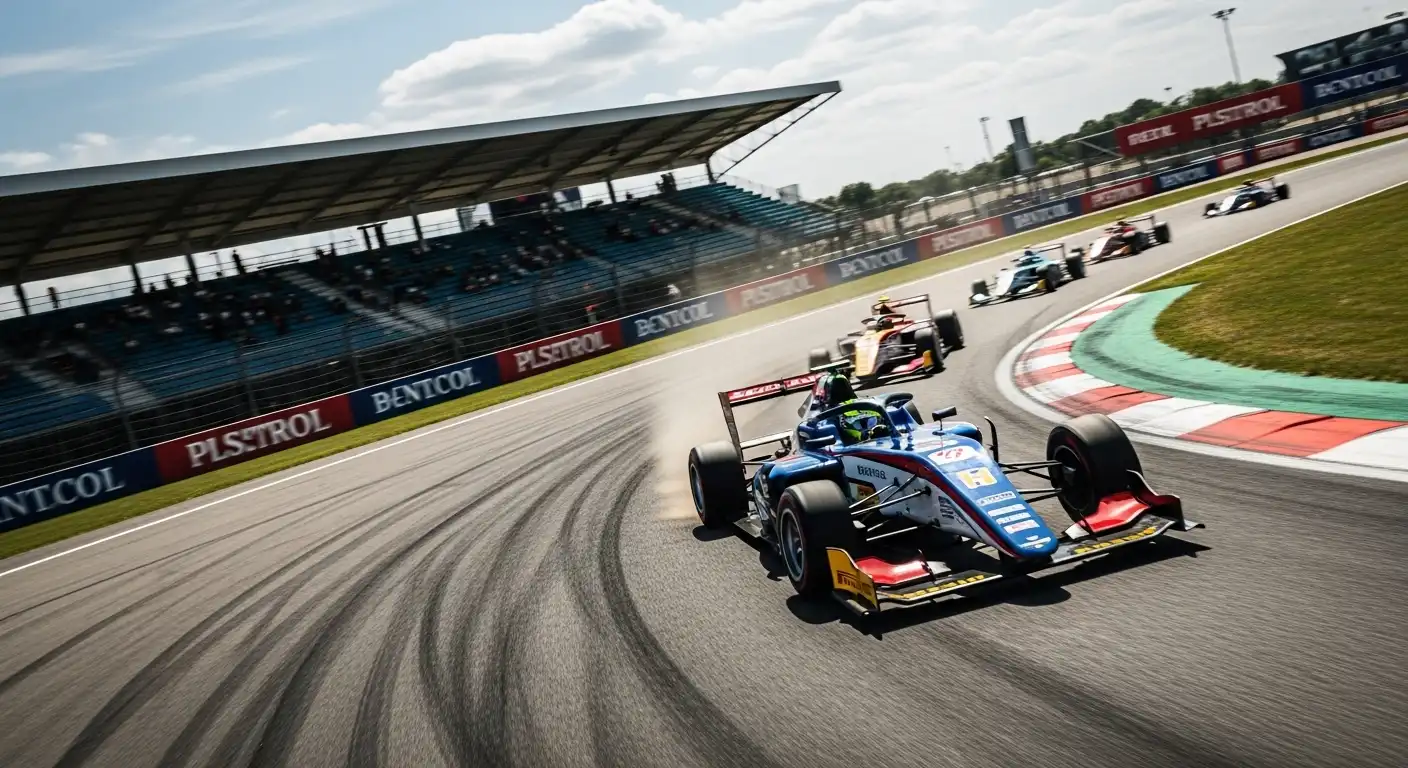In the world of motorsports, every millisecond counts, and every decision, no matter how small, can make or break a race. While much of the focus is often on the car’s engine, aerodynamics, and the driver’s skill, one of the most important factors in determining a car’s performance on the track is often overlooked—the tires. Tires are the only contact point between the car and the road (or track, in the case of motorsports), and their role in performance is critical. From grip to speed, tires influence nearly every aspect of your car’s handling.
In this blog, we’ll explore why tires are so important to your performance on the track and how they can affect everything from speed and control to safety and race strategy.
1. Tires Affect Grip and Traction
The most fundamental role of tires on a race car is to provide grip and traction. The grip generated by the tires is what allows the car to stay connected to the track and make precise turns at high speeds. Without sufficient grip, a car will slip and slide, resulting in lost time and potentially a loss of control.
Why Grip Matters:
-
Turning Performance: During sharp turns, especially high-speed corners, tires with optimal grip keep the car’s weight properly distributed and allow it to stick to the racing line. A loss of grip in a corner can lead to understeer (where the car doesn’t turn enough) or oversteer (where the car turns too much), both of which slow you down.
-
Acceleration and Braking: Tires also impact how well the car accelerates or brakes. Tires that offer excellent grip allow the driver to apply more throttle earlier in a turn and stop more efficiently under braking.
The rubber compound of the tire, as well as the design of the tread pattern, plays a significant role in determining how much grip is available in different track conditions, such as dry, wet, or slippery surfaces.
2. Tires Impact Handling and Stability
A race car’s handling is directly influenced by the tires it’s wearing. Good handling allows drivers to push their cars to the limit, taking corners with confidence and maneuvering through technical sections of the track smoothly.
Tire Pressure and Handling:
-
Proper Tire Pressure: Tire pressure is one of the most critical factors in achieving balanced handling. Over-inflated tires reduce the surface area that contacts the track, leading to less grip, while under-inflated tires generate more heat and cause excessive wear. Both extremes can make the car harder to handle and less responsive.
-
Tire Temperature: Tires perform best when they reach an optimal temperature. Too cold, and they become hard and lose traction; too hot, and they wear out too quickly. Managing tire temperature through heat cycles during the race is key to maintaining consistent performance.
Tires that provide a balanced combination of responsiveness and stability give the driver better control, allowing for faster and more precise maneuvering on the track.
3. Different Tire Compounds for Different Conditions
In motorsports, not all tires are created equal. Tires come in different compounds and types, each designed for specific conditions. The right choice of tire compound can make or break your performance during a race.
Tire Compounds:
-
Soft Compound Tires: These tires offer maximum grip but wear out quickly, making them ideal for short, high-intensity races or qualifying sessions. They allow for faster lap times but may not be ideal for long races due to their rapid wear.
-
Hard Compound Tires: Harder tires have better durability and are suited for long races where tire wear could become a factor. However, they don’t offer the same level of grip as soft tires, meaning they may result in slower lap times.
-
Intermediate and Wet Tires: These tires are specifically designed for wet or slippery conditions, allowing for better water displacement and increased traction in the rain. Racing in wet conditions without the right tires can lead to aquaplaning, where the car loses contact with the track surface.
Choosing the right tire compound is crucial to race strategy. Teams often decide on tire choice based on track conditions, weather forecasts, and race duration to gain the best advantage.
4. Tire Wear and Race Strategy
Tire wear is an often-overlooked element of race strategy, but it can make a significant difference in the outcome of a race. How tires wear during a race can affect how a driver approaches the race, how often they pit, and how much time they lose during pit stops.
Managing Tire Wear:
-
Tire Degradation: As tires wear, their performance decreases. For example, as a soft tire’s grip diminishes, the car may become harder to handle, and lap times will increase. Drivers must manage tire degradation through careful throttle control, smooth cornering, and timing of pit stops.
-
Pit Stops: In longer races, drivers and teams must carefully strategize when to switch tires. A well-timed pit stop to change tires can help maintain optimal performance throughout the race. Teams also need to calculate how tire wear impacts their pace in the final stages of the race and how much time can be lost on pit stops.
Understanding tire wear and adapting race strategies accordingly can help maintain consistent lap times and give drivers the upper hand as the race progresses.
5. Tire Choice Can Influence Overall Performance
The impact of tires on overall car performance goes far beyond just speed. From maintaining consistent handling to achieving better stability and endurance, tires are at the heart of how well a car performs on the track.
Tire Design and Performance Features:
-
Tread Pattern: Different tread designs are optimized for different types of racing surfaces. For example, a racing tire may have a smooth or slick surface for dry conditions, while tires designed for rain have grooves that help channel water away for better traction.
-
Sidewall Stiffness: The sidewall of the tire is just as important as the tread for overall handling and performance. A stiff sidewall provides more stability and responsiveness, especially in high-speed corners, while a softer sidewall can offer a more comfortable ride.
Ultimately, tire choice isn’t just about picking a set of tires that look good or perform well in one specific condition—it’s about understanding the full performance package that suits the car’s design and the driver’s needs.
6. Safety: Tires Are Key to Preventing Accidents
In motorsports, tire failure can lead to catastrophic consequences. A blown tire or a puncture can cause the driver to lose control, resulting in dangerous crashes. Tire manufacturers and teams take great care in testing tire durability and performance to prevent failures during high-speed racing.
Tire Safety Considerations:
-
Tire Pressure Monitoring: During the race, teams often rely on tire pressure monitoring systems to detect fluctuations in pressure that could lead to failure. If a tire’s pressure is too low, it could cause the tire to overheat or wear unevenly, leading to blowouts.
-
Tire Inspections: After each race, tires are carefully inspected for signs of wear or damage. Teams may analyze tire performance data to ensure that no critical issues were overlooked during the race.
The durability, performance, and safety of tires are crucial not only for optimizing lap times but for ensuring driver safety throughout the race.
7. Conclusion: Tires Are Vital for Success on the Track
From grip to handling, performance to safety, tires play a central role in how well a race car performs on the track. Every aspect of the race—whether it’s tire choice, tire pressure, or tire wear—affects the overall strategy and outcome of the event. Drivers, teams, and engineers work together to select the optimal tires for each race, ensuring they strike the right balance between speed, endurance, and handling.
Understanding the importance of tires and how they influence every aspect of a race can help you appreciate the complexity of motorsports and the critical role they play in achieving victory. So the next time you’re watching a race, remember: those tires are doing more than just supporting the car—they’re helping drivers reach the finish line faster and safer.
At AutoSportInfo.com, we’re dedicated to bringing you the latest insights and updates from the world of motorsports. Stay tuned for more tips, strategies, and news on all things racing!



